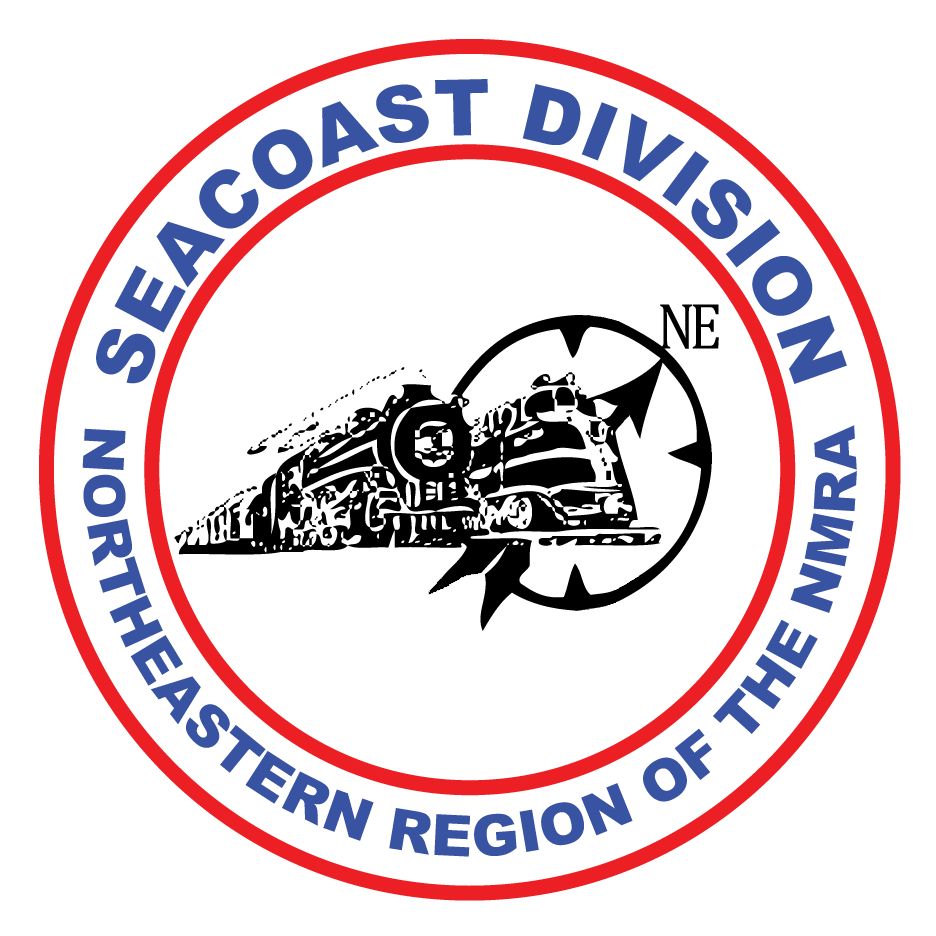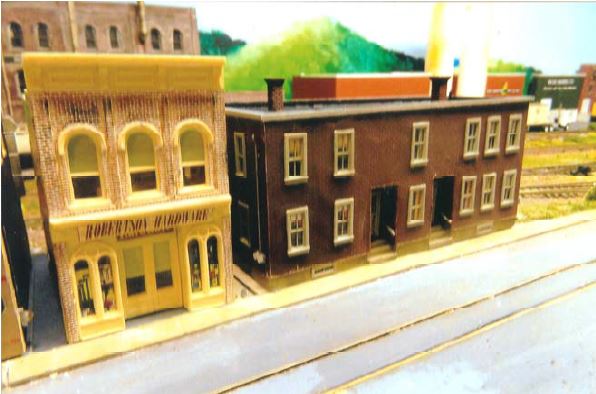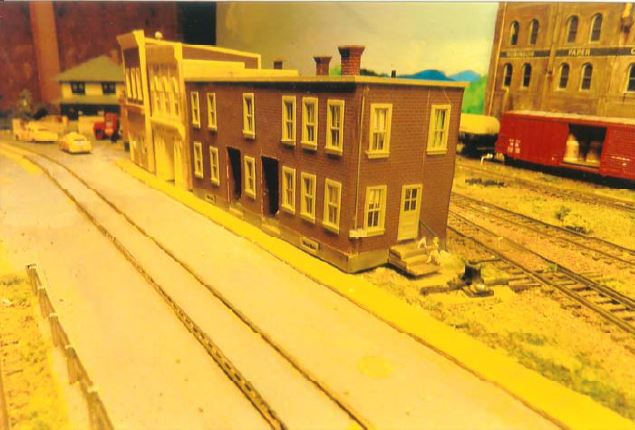Urban Modeling Old School Style
January 23, 2014
Written by Paul Lessard
This article originally appeared in the January 2014 edition of The Switch Tower (Vol. 21 No. 1)
Every once in a while model railroaders will take a hard look at their layouts with the intention of improving their visual appearance. Such was the situation I was dealing with. After 15 years, one neighborhood on the layout was looking rather stale and uninteresting.
I decided to start an "urban renewal" project using a DPM kit that I had modified and another hardware store that I had acquired at a train show. This left an empty trapezoid shaped lot that would be difficult to fill with a commercial kit. Obviously, a custom scratch-built structure was the answer to my problem.
Starting with the footprint of the space, I designed a 4-unit apartment building that would complete this project. Now it was time to select the materials for this edifice. My stock of suitable strip wood was rather sparse. I had plenty of sheet styrene, but I decided against this as cutting styrene would take longer and I already had many plastic structures. I finally chose Strathmore and cardstock for my apartment block as this would be cheap and easy to work with. For those not familiar with Strathmore, it is a high quality, fine-textured material that was popular in the 1950's and 1960's. I had all the walls and roof cut, complete with window/door openings, in a couple of evenings. The exterior siding is a stick-on brick material. It is not embossed, but is suitable to represent an asphalt brick siding. Window and door castings are relatively new products by Northeastern Scale Models. The nice thing about these parts is that glazing is included. They are laser-cut to size, saving the builder much time in construction. For window dressings, I used Signs Galore curtain and Venetian blinds printed on paper stock. It is simply a matter of cutting to size and gluing to the inside of the window. At this point, with major assembly done, I added detail items such as chimneys, handrails, and mail boxes.
In conclusion, a nice apartment building was added to my neighborhood while spending a relatively small amount of time and money.


